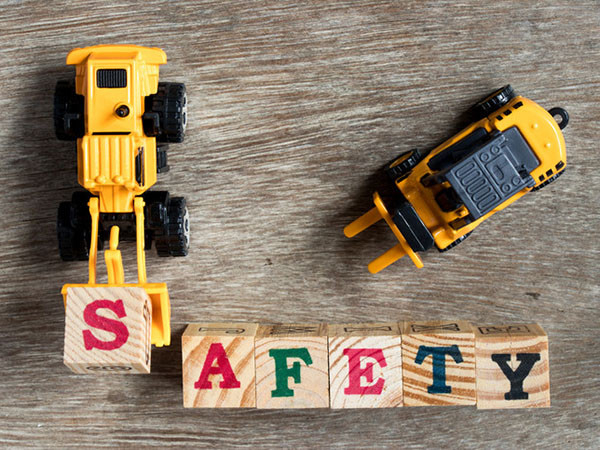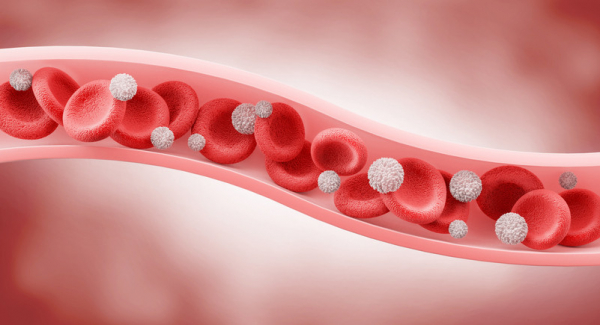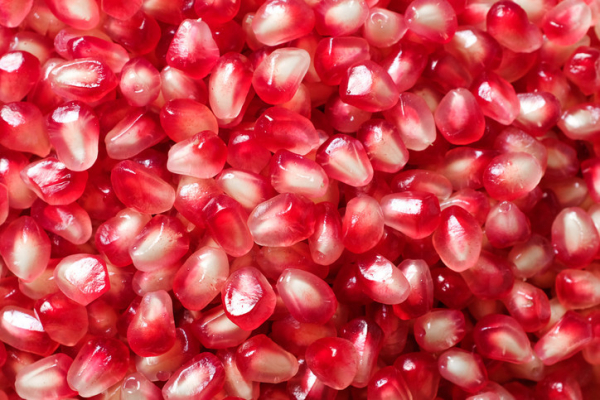
Magnets, sound, and batteries: Choosing safe toys

This holiday season, as parents, friends, and family set out to buy toys for children on their lists, or donate them to those in need, here are some suggestions for things you shouldn't buy — and those you should.
Not all gifts need to be purchases, of course. Opportunities for play bring joy and sharpen skills children and teens benefit from daily. And for infants and toddlers, responsive games build bonds and encourage healthy development.
Ten tips for selecting safe toys
Below are 10 tips for choosing safe toys — and using toys safely.
- Choose age-appropriate toys. Read the safety labels! If a child is under 3, be particularly mindful of anything with small parts, or attached small parts that might come off. Balloons are also a no-go for this age group.
- Watch out for magnets in toys. The US Consumer Product Safety Commission warns of serious dangers linked to toys with tiny, super-strong magnets, such as small magnetic balls and magnetic building sets. This is a big and important no for any child who might put the toy in their mouth. Additionally, young siblings or even older children and teens may be put at risk. These tiny magnets are many times more powerful than traditional magnets. If swallowed, two or more can connect through the walls of the intestine, leading to blockages and perforations.
- "Vintage" toys aren't always a good idea. While most vintage and used toys are likely fine, they don't have their safety labels anymore. You don't know if they may have been recalled or be broken in a way that could make them less safe. Be particularly careful about anything made before 2008, because that's when toy safety legislation was passed.
- Toys that move. Be sure your child can — and does — use toys like scooters, skateboards, and bikes safely. Pair these gifts with appropriate protective gear like helmets, too.
- Loud toys. Loud noises can actually damage hearing. Given how much noise we end up being exposed to over a lifetime, and the ubiquitous use of earbud earphones, you really don't want to start early with extra noise. You can always turn the sound off, but it's probably better to just not buy the toy.
- Slime. Apparently, some brands have high levels of toxic boron! Make your own instead (there are lots of easy recipes for borax-free slime), or just avoid it altogether.
- Fidget spinners and other toys designed for adults. If it says "designed for adults," beware. This means the maker doesn't have to meet US toy safety standards for children.
- "Hatching" toys. As they hatch they generate small pieces that can become — you guessed it — choking hazards.
- Smart toys and devices. They may collect data you'd rather not share, and could be hacked. Mozilla has a great resource to help you figure out which devices are safer than others. Remember to take privacy into account when gifting these items to children.
- Makeup. Some brands can contain toxic chemicals. Personally, I think young kids shouldn't wear makeup anyway.
Back-to-basics favorite toys to choose
When it comes to toys for children, back to basics is best: simple toys that encourage pretend play, creativity, fine motor skills, language skills, and movement. Think things like dolls, puppets, costumes, train sets, blocks and other building sets, balls, jump ropes, bikes, books — and, of course, all kinds of art supplies. These are the kinds of toys that give the most sustained kind of fun, ones that require imagination and interaction, get kids moving, and help kids in their development.
I particularly suggest three kinds of toys:
- Toys without screens. Many children have way too much screen time. So skip the electronics this year.
- Toys that encourage exercise. We are all too sedentary these days. It's great to get outside and exercise, so things like bikes and balls can be excellent gifts. If the weather is too cold or you don't have much easily accessible outdoor space, look for things you can do inside. Balls with a handle that you can sit and bounce on are fun, as are balance boards, riding toys, stepping stones, or even indoor tightropes. A yoga mat can be used for all kinds of exercise. Along with setting up home offices, it's a good idea to set up an exercise space if you can.
- Toys you can play with together. Look for games that you can play as a family — there are so many out there. Or get a train set or building kit that you can do together. We need each other more than ever before, and we need fun; getting both at the same time is a wonderful holiday gift.
About the Author

Claire McCarthy, MD, Senior Faculty Editor, Harvard Health Publishing
Claire McCarthy, MD, is a primary care pediatrician at Boston Children’s Hospital, and an assistant professor of pediatrics at Harvard Medical School. In addition to being a senior faculty editor for Harvard Health Publishing, Dr. McCarthy … See Full Bio View all posts by Claire McCarthy, MD

What to do if you think your child has the flu

Once influenza season is underway, it’s natural that if you hear your child start coughing, you wonder: could this be the flu or another virus? And if you think it is the flu, what should you do?
Is it the flu, RSV, COVID –– or just a cold?
It’s not always easy to tell these illnesses apart, especially at the beginning.
- Flu: The flu usually comes on suddenly, and its symptoms can include fever, runny nose, cough, sore throat, headache, muscle aches, feeling tired, and generally just feeling rotten. Some people have vomiting and/or diarrhea, too. Not everyone has all these symptoms, and the illness can range from mild to severe.
- RSV: Along with fever and sore throat (and feeling tired and rotten), RSV often causes a lot of nasal congestion and a mucusy cough. In some babies, it causes wheezing.
- COVID causes similar symptoms to flu and RSV, but the cough generally isn’t as mucusy, the fatigue can be worse, and some people will lose their sense of taste and/or smell.
- The common cold generally causes similar symptoms to flu, RSV, and COVID, but milder and often without a fever. However, some people have bad colds — and some people have mild cases of the flu, RSV, or COVID.
Call your doctor for advice
Because these illnesses are so similar, it’s a good idea to call your doctor’s office if your child has cold symptoms. You don’t necessarily need an appointment, but you should call for advice. Describe your child’s symptoms. Based on the symptoms, and your child’s particular situation (such as any medical problems they might have, or vulnerable people like infants or elderly living with you), your doctor
- may suggest testing for COVID, flu, or RSV
- may want you to bring your child in
- may want to prescribe antiviral medication.
Because every child and every situation is different, you should call and get advice that is tailored to your child and family.
What helps when your child has the flu?
Once you’ve called your doctor for advice or have a diagnosis of flu, the steps below will help your child feel more comfortable and speed recovery.
Stock up on supplies
There are a few things that make getting through the flu easier, including:
- acetaminophen and ibuprofen for fever and aches
- a reliable thermometer, if you don’t have one
- hand sanitizer (buy a few to keep all over the house)
- tissues
- fluids to keep your child hydrated, such as clear juices, broth, oral rehydration solution (for infants), and popsicles (which are great for sore throats, and eating them is the same as drinking). If you don’t have a refillable water bottle (one with a straw is great if kids are lying down), get one of those too.
- honey (if your child is older than a year) and cough drops (if your child is at least preschool age)
- saline nose drops
- a humidifier, if you don’t have one
- simple foods like noodle soups, rice, crackers, bread for toast.
Make sure your child rests
Turn off or at least limit the screens, as they can keep children awake when their body needs them to sleep. Keep rooms darkened, and limit activity. If they aren’t sleeping, quiet things like reading (or reading to them), drawing, card games, etc. are best.
Push fluids, don’t worry about food
When children are fighting the flu, the most important thing is that they stay hydrated. They need a bit of sugar and salt too, which is why juices and broths are good choices. If they only want water, give them some crackers to get the sugar and salt — but don’t worry too much if they don’t want to eat more than that. They will eat more when they feel better.
Watch for warning signs
Most children weather the flu fine, but some children get very sick, and there can be complications. Call your doctor or go to an emergency room if your child has
- a high fever (102° F or higher) that won’t come down with acetaminophen or ibuprofen, or a new fever after your child seemed to be getting better
- any trouble breathing
- severe pain of any kind
- severe sleepiness, so that it’s hard to wake them or keep them awake
- trouble drinking or keeping fluids down
- anything that seems strange or worries you (I always respect a parent’s “Spidey sense”).
Keep your child home until they are well
That doesn’t necessarily mean they can’t go to school or daycare until they are cough- or runny nose-free, but it does mean that they have to be fever-free for at least 24 hours, not coughing constantly, able to eat and drink, and have enough energy to do whatever school or daycare entails. Not only is this important for your child’s recovery, but it’s important for preventing the spread of influenza. Which leads me to the last point…
Do your best to keep others from getting sick
Besides keeping your child home (and staying home yourself if you catch it), there are other things you can do, such as:
- Make sure everyone in the house washes their hands frequently (that’s where the hand sanitizer all over the house comes in handy).
- Teach everyone to cover coughs and sneezes (they should do it into their elbow, not their hands).
- Don’t share cups, utensils, towels, or throw blankets.
- Wipe down surfaces and toys regularly.
- Discourage visitors (use technology for virtual visits instead).
- Be thoughtful about physical contact. Some degree of contact and snuggling is part of parenthood, but siblings may want to keep a bit of distance, and you can always blow kisses and do pretend hugs instead of the real thing.
Remember, too, that it’s never too late to get a flu shot if you haven’t already.
To learn more about the flu and what to do, visit flu.gov.
About the Author

Claire McCarthy, MD, Senior Faculty Editor, Harvard Health Publishing
Claire McCarthy, MD, is a primary care pediatrician at Boston Children’s Hospital, and an assistant professor of pediatrics at Harvard Medical School. In addition to being a senior faculty editor for Harvard Health Publishing, Dr. McCarthy … See Full Bio View all posts by Claire McCarthy, MD

After prostate cancer treatment, a new standard of care for rising PSA

It isn’t often that a study leads to fundamental changes in how cancer patients are treated. But new research is doing just that for some men with prostate cancer that recurs after initial treatment.
Post-treatment recurrence
The first sign of recurrence is typically a rise in blood levels of prostate-specific antigen (PSA). PSA should drop to zero after surgical removal of the prostate, and to near zero after radiation therapy. Prostate cancer cells release PSA, so if the levels rise again after this initial treatment, then new tumors are likely forming in the body. This is called a biochemical recurrence, because the newly developing tumors are still too small to see on traditional imaging scans.
Doctors ordinarily treat biochemical recurrence with hormonal therapies, drugs that prevent the body from making testosterone (a hormone that fuels prostate cancer growth). But results from a large clinical trial show there’s a better approach.
Study methodology and results
During the study, called the EMBARK phase 3 clinical trial, investigators enrolled 1,068 men whose PSA levels had doubled within nine months of initial treatment. When PSA rises that quickly, men are at high risk of rapid cancer progression.
The men were randomly divided into three groups: One was treated with a hormonal therapy called leuprolide, given by injection every 12 weeks. A second group was treated with leuprolide as well as a daily oral dose of enzalutamide, a drug that deflects testosterone from its cell receptor. The third group was treated with daily enzalutamide by itself.
The investigators already knew from earlier studies that enzalutamide delays further progression and lengthens survival for men with metastatic prostate cancer. With this new study, they hypothesized that earlier uses of that drug might have similar benefits for men with biochemical recurrence.
That hypothesis proved correct. The men were followed for just over five years after their treatments were completed. And according to the results, more of the enzalutamide-treated men remained free of worsening cancer. Specifically, 87.5% of men who got the combined treatment — and 80% of men treated with enzalutamide by itself — avoided metastatic cancer, compared to 71.4% of the men who only got leuprolide.
Enzalutamide treatment was also more effective at preventing further PSA increases. In all, 97.4% of men who got the combined therapy and 88.9% of men who got enzalutamide alone avoided PSA progression, compared to 70% of the leuprolide-treated men. If the PSA was less than 0.2 ng per milliliter at 36 weeks, then the men could go off treatment altogether. Far more of the enzalutamide-treated men (up to 90%) went off treatment for durations ranging up to 20 months.
Enzalutamide treatment was well tolerated. The most common side effect was mild to moderate nipple pain and breast enlargement. Most of the men in all three groups are still alive, and EMBARK investigators are following them see if treatment-related differences in survival show up over time.
Observations and comments
Based on EMBARK’s results, Dr. Neal Shore, director of the Carolina Urologic Research Center in Myrtle Beach, South Carolina, and the study’s co-lead author, concluded that enzalutamide treatment “should now be the standard of care for high-risk biochemical recurrence.” Whether enzalutamide treatment should also be combined with leuprolide is a decision that men can make in consultation with a doctor.
An important point is that doctors now have a better way to detect metastatic prostate cancer that wasn’t available when EMBARK was launched. The cancer cells contain high levels of a protein called prostate-membrane specific antigen (PSMA) that shows up on specialized imaging scans. PSMA-based imaging methods can reveal tiny metastatic tumors in the body that weren’t previously visible. In such cases, patients who might once have been diagnosed with biochemical recurrence are now known to have metastatic cancer. And since doctors can now see those tumors, they can treat them directly with surgery or radiation — and potentially achieve a cure.
Still, Dr. Stephen Freedland, an EMBARK lead investigator and urologist at Cedars-Sinai Medical Center in Los Angeles and the Durham VA Medical Center in Durham, North Carolina, says the study’s findings still apply. If PSMA findings are negative even as PSA continues to rise, “then EMBARK shows that systemic treatment [using enzalutamide with or without hormonal therapy] is still the best option,” he says.
If PSMA findings show just a few metastatic tumors (this is called oligometastatic prostate cancer), then those tumors can be treated surgically or with radiation, and possibly with hormonal therapy. And if PSMA reveals widespread metastatic cancer throughout the body, then “metastasis-directed therapy is no longer an option, and hormonal therapy with enzalutamide is the best option to delay progression as shown in EMBARK,” Dr. Freedland says.
This study addresses a very large segment of the treated prostate cancer population — those in whom residual cancer following surgery or radiation therapy persists — and the results are “welcome and surprising,” says Dr. Marc Garnick, the Gorman Brothers Professor of Medicine at Harvard Medical School and Beth Israel Deaconess Medical Center. “Also welcome is the ability of men to go off of therapy if their PSA values were low at the end of 36 weeks of therapy. As pointed out by both Drs. Shore and Freedland, their study adds a significant contribution to this large patient population. The authors should be congratulated on this important contribution.”
About the Author

Charlie Schmidt, Editor, Harvard Medical School Annual Report on Prostate Diseases
Charlie Schmidt is an award-winning freelance science writer based in Portland, Maine. In addition to writing for Harvard Health Publishing, Charlie has written for Science magazine, the Journal of the National Cancer Institute, Environmental Health Perspectives, … See Full Bio View all posts by Charlie Schmidt
About the Reviewer

Marc B. Garnick, MD, Editor in Chief, Harvard Medical School Annual Report on Prostate Diseases; Editorial Advisory Board Member, Harvard Health Publishing
Dr. Marc B. Garnick is an internationally renowned expert in medical oncology and urologic cancer. A clinical professor of medicine at Harvard Medical School, he also maintains an active clinical practice at Beth Israel Deaconess Medical … See Full Bio View all posts by Marc B. Garnick, MD

Veins are a key player in the body: Here’s why

Blood circulation is vital to our health. Our arteries deliver oxygen, energy-rich nutrients, hormones, immune cells, and other essentials throughout the body. When deliveries are cut off, organs and tissue can be irreversibly damaged within minutes.
But a second part of blood circulation is also vitally important: the return trip. After our arteries deliver the goods, our blood must return to the lungs to pick up more oxygen, stock up on nutrients, get rid of carbon dioxide, and head back to the heart to be pumped out again. In this way, blood is in continuous motion, ensuring organs and tissues get what they need while waste products are removed.
The vessels designed for the return trip are your veins. Read on for answers to questions about how veins work, what can interfere with their ability to work smoothly, and five ways to keep thousands of miles of these blood vessels healthy.
What are veins and what do they do?
Perhaps you haven't thought much about your veins. Or if you have, maybe you focused on varicose veins, those swollen, unsightly purplish vessels that may be visible just beneath the skin of the legs. Or perhaps you had a blood test and the person taking the blood had a hard time finding a "good vein." But these are just a small part of vein world.
Veins make up a network of connecting tubes throughout the human body, ranging in size from 1 mm (about the size of a pencil point) to 2 cm (about the size of a quarter), that bring blood low in oxygen back to the lungs to reload with oxygen. Then four pulmonary veins carry oxygen-rich blood from the lungs to the heart. (Fun fact: some people have three or five pulmonary veins, but most of us have four.)
Often, major veins are found alongside similarly named arteries, like a highway with cars moving in opposite directions: in the upper arm, for example, the axillary vein lies next to the axillary artery; in the kidney, the renal vein runs alongside the renal artery.
How do veins help keep blood flowing?
Let's start by picturing tiny red blood cells loaded up with oxygen. Now imagine you're a red blood cell that has just traveled from the heart through the arteries to a calf muscle of someone who is jogging. After you drop off the much-needed oxygen and pick up waste products like carbon dioxide, you need to get back to the heart — fast! — because exercising muscles need extra oxygen.
But wait. As you head back to the lungs to load up on more oxygen and release carbon dioxide, there's a steep climb straight up. How can you make it back to the lungs without help?
Fortunately, veins have tiny valves within them that allow blood to flow in only one direction. When muscles contract near larger veins, they pump blood toward the lungs. In addition, taking in a breath creates a sort of suction that pulls blood toward the lungs. Without these forces encouraging blood to flow in the right direction through the veins, blood flowing into the legs would pool there, causing dangerously high pressure and swelling.
Why are veins blue?
Actually, they aren't. People think they're blue because that's often how they appear in diagrams and illustrations. But that's just to set them apart from the bright red arteries.
The veins on the back of your hand may appear blue if you have light-colored skin. That's an illusion due to the way light is absorbed by the skin. In people with darker skin tones, veins tend to blend in more.
If you could look at veins directly, without any skin in the way, they'd appear pale because they are naturally colorless, or dark red due to the blood inside them.
What sort of problems can occur in veins?
Blood clots, varicose veins, and venous insufficiency are some of the most common health conditions affecting the veins:
- Deep vein thrombosis (DVT) occurs when a blood clot forms in a deep vein, blocking blood flow. This condition is potentially serious because clots in deep veins can travel to the lungs, causing a life-threatening pulmonary embolism by blocking an artery that delivers blood to part of the lungs.
- Superficial thrombophlebitis is a blood clot in a small vein just under the skin. This causes inflammation and pain.
- Varicose veins are small veins under the skin that swell and twist. While these may be harmless, they can cause pain and are occasionally complicated by blood clots.
- Venous insufficiency occurs when the valves in veins are damaged — due to aging or prior blood clots, for example. The blood flow through the veins may be impaired, leading to leg swelling, increased pressure, inflamed skin, and poor healing.
One far more rare condition goes by the impressive name of phlegmasia cerulea dolens. It is a serious complication of DVT in which the obstruction of blood flow through a deep vein leads to blocked blood flow through nearby arteries. That can cause gangrene and the need for amputation.
All of these conditions can affect circulation temporarily or in a lasting way. Treatments are aimed at restoring circulation, if possible.
Top 5 ways to improve vein health
Healthy veins help the heart, brain, and every other part of your body. Here are five ways to improve vein health, even if you already have vein disease:
- Be active. Exercise regularly and avoid prolonged standing or sitting.
- Choose healthy foods, such as those in a plant-based, heart-healthy diet.
- Maintain a healthy weight.
- Don't smoke.
- Wear compression stockings if you already have vein disease such as venous insufficiency.
And of course, seek medical care for unexplained swelling, inflammation, or ulcers on your legs, ankles, or feet.
The bottom line
Our veins are busy around the clock, shuttling blood from distant sites back to the lungs and heart, which pumps enriched blood out again. Without veins, blood circulation could not happen. They're a good example of how many parts of your amazing body are easy to overlook until something goes wrong.
About the Author

Robert H. Shmerling, MD, Senior Faculty Editor, Harvard Health Publishing; Editorial Advisory Board Member, Harvard Health Publishing
Dr. Robert H. Shmerling is the former clinical chief of the division of rheumatology at Beth Israel Deaconess Medical Center (BIDMC), and is a current member of the corresponding faculty in medicine at Harvard Medical School. … See Full Bio View all posts by Robert H. Shmerling, MD

Immune boosts or busts? From IV drips and detoxes to superfoods

Ever see ads for products that promise to supercharge immunity? Activate your body’s natural defenses? Support a healthy immune system while delivering a potent boost derived from nature’s hottest immune-enhancing ingredients?
While the words may change to reflect the latest trends, the claims certainly sound amazing. But do the multitude of products promoted as immune boosters actually work? What steps can we take to support the immune system? Both are important questions, especially in the wake of a deadly pandemic and as flu and cold season arrives.
IV drips, supplements, cleanses, and superfoods
The lineup of immune-boosting products and advice includes:
- Home intravenous (IV) drips. Want a health professional to come to your home with IV fluids containing various vitamins and supplements? That’s available in many US cities, and some companies claim their formula is designed to supercharge immunity. These on-demand IV treatments aren’t risk-free and can be quite expensive.
- Vitamins and supplements. Popular options include turmeric, milk thistle, and echinacea, often in combination with various vitamins. Hundreds of formulations are available.
- Superfoods and foods to avoid. If you search online for “foods to boost the immune system” you’ll see thousands of articles touting blueberries, broccoli, spinach, dark chocolate, and other foods to keep infections away. There’s also a list of foods to avoid, such as sugary drinks or highly processed meats, because they’re supposed to be bad for your immune system.
- Cleanses and detox treatments. No doubt you’ve seen pitches for cleanses and detox products intended to remove toxins from the body. Their marketing warns that the environment is full of harmful substances that get into the body through the air, water, and food, which we need to remove. Advocates suggest that, among other harmful effects, these often unnamed toxins make your immune system sluggish.
Are the heavily marketed IV drips, supplements, or detox products endorsed by the FDA?
No. In fact, the standard disclaimer on supplements’ claims of immune-boosting properties says: “This statement has not been evaluated by the FDA. This product is not intended to diagnose, treat, cure, or prevent any disease.”
Yet sellers are allowed to use phrases like “boosts immune function” and “supports immune health.” These terms have always seemed vague to me. More importantly, they’re confusing:
- Boosting immunity is what vaccinations do. They prime your immune system to help fight off a specific infectious organism (like the flu shot before each flu season).
- Immune support typically describes vitamins such as vitamin C, or other nutrients necessary for a healthy immune system. It’s true that a deficiency of vital nutrients can cause poor immune function. But that doesn’t mean a person with normal levels of nutrients can expect supplements to improve their immune system.
Can products marketed as immune boosters actually boost immunity?
Unless you have a deficiency in a key nutrient, such as vitamin C or zinc, the short answer is no.
That is, there’s no convincing evidence that any particular product meaningfully improves immune function in healthy people. For example, results of studies looking at various supplements for colds and other similar infections have been mixed at best. Even when taking a particular supplement was linked to reduced severity or duration of an infection like a cold, there’s no proof that the supplement boosted overall immune function.
This goes for individual foods as well. None has ever been shown to improve immune function on its own. It’s the overall quality of your diet, not individual foods, that matters most. A similar approach applies to advice on foods you should avoid, such as sugary drinks or highly processed meats: the best foods to avoid in support of your immune system are the same ones you should be limiting anyway.
How to get the most out of your immune system
It’s not a secret and it’s not a product. What’s good for your overall health is good for immune function. The best ways to keep your immune system at peak performance are:
- Eat well and follow a heart-healthy diet, such as the Mediterranean diet.
- Exercise regularly and maintain a healthy weight.
- Don’t smoke or vape.
- If you drink alcoholic beverages, drink only in moderation.
- Get plenty of sleep.
- Minimize stress.
- Get regular medical care, including routine vaccinations.
- Take measures to prevent infection such as frequent hand washing, avoiding people who might have a contagious illness, and wearing a mask when it’s recommended.
This list probably looks familiar. These measures have long been recommended for overall health, and can do a lot to help many of us.
Certain illnesses — HIV, some cancers, and autoimmune disorders — or their treatments can affect how well the immune system works. So some people may need additional help from medications and therapies, which could truly count as immune boosting.
The bottom line
Perhaps there will come a time when we’ll know how to boost immune function beyond following routine health measures. That’s simply not the case now. Until we know more, I wouldn’t rely on individual foods, detox programs, oral supplements, or on-demand IV drips to keep your immune system healthy, especially when there are far more reliable options.
About the Author

Robert H. Shmerling, MD, Senior Faculty Editor, Harvard Health Publishing; Editorial Advisory Board Member, Harvard Health Publishing
Dr. Robert H. Shmerling is the former clinical chief of the division of rheumatology at Beth Israel Deaconess Medical Center (BIDMC), and is a current member of the corresponding faculty in medicine at Harvard Medical School. … See Full Bio View all posts by Robert H. Shmerling, MD